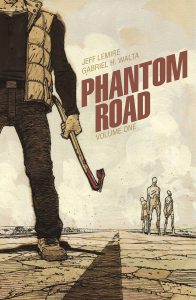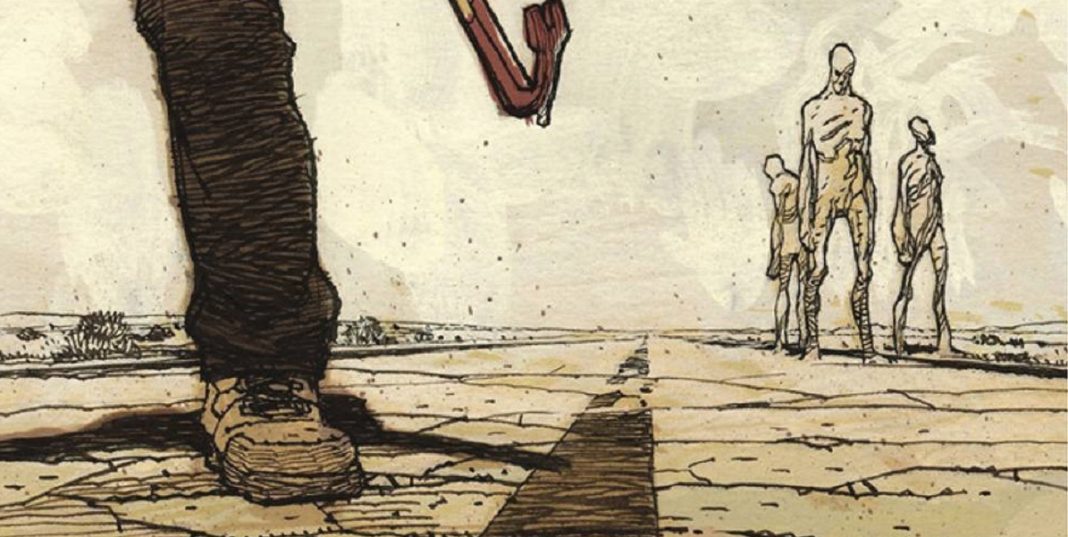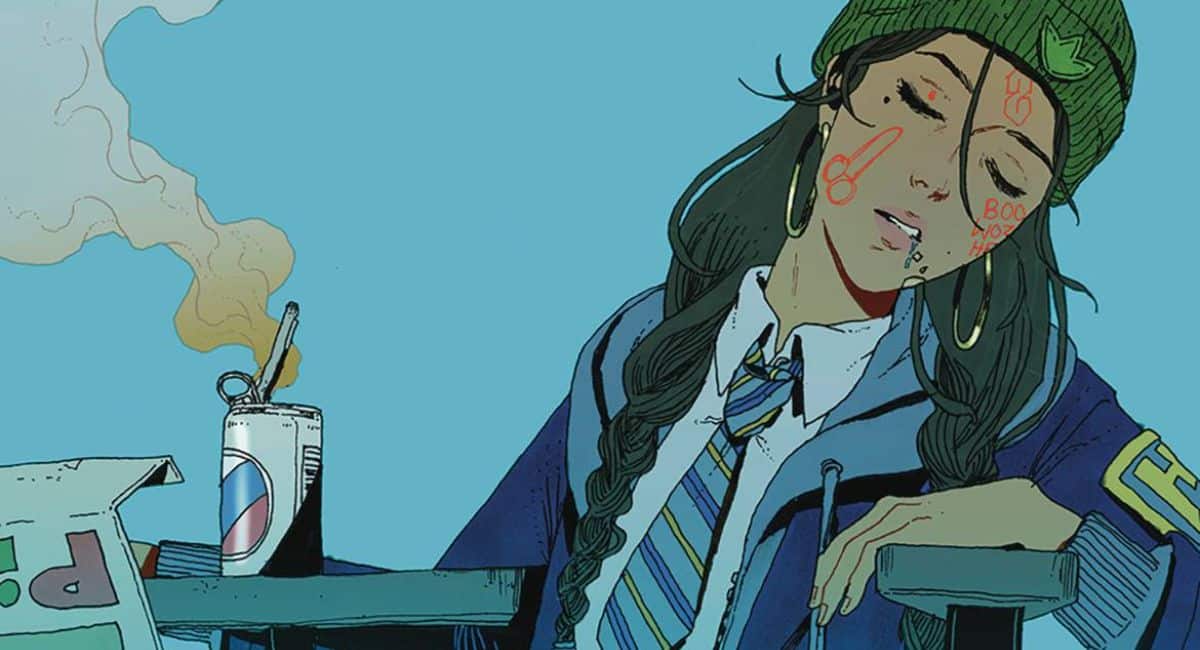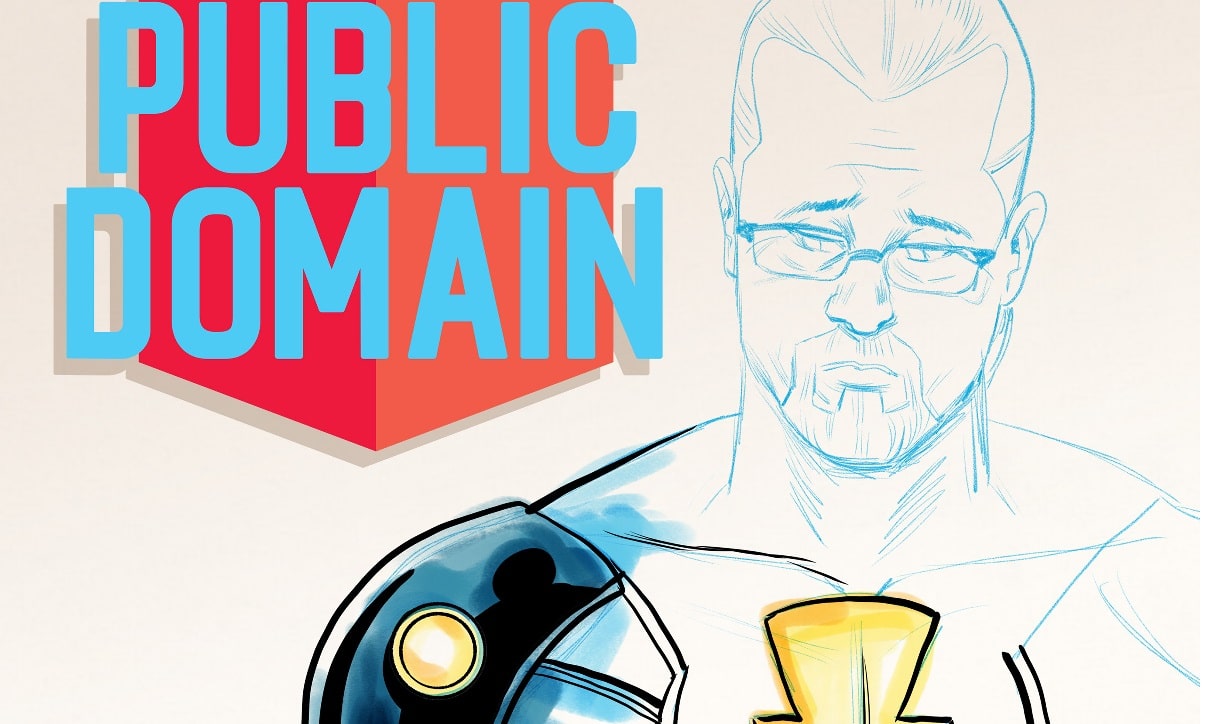Phantom Road, Vol. 1

Artist: Gabriel H. Walta
Colorist: Jordie Bellaire
Lettering: Steve Wands
Publisher: Image Comics
Wide, open, and with no end in sight, that’s where you’ll find yourself on the transitory road to wherever you’re going. No matter where you’re coming from or what your destination is, the road always feels, at parts, to be endless and desolate. It’s only when you’ve been on the road a hot minute do you view it differently and notice the pockmarked pockets of life that exist alongside it– for better or for worse. You now find yourself on the Phantom Road.
Penned by the colloquially sound Jeff Lemire, Phantom Road Vol. 1 is a hotbed rip through territories unknown and familiar. A total breeze to read through, Phantom Road leans on cold opens and frankly Lynchian levels of segue to efficiently unravel towards us. The cold opens jump ahead into each issue’s third act to mimic how road signs detail us of the gas stations and fast food accommodations up ahead. By the time we catch up to where the cold open starts, Lemire has answered many of our questions, but now-burdened with the narrative, the context changes our understanding, and generates more questions. This consistently upending engine drives most of the narrative between pit stops for our beset travelers.
Those travelers? A woman nicknamed Birdie escapes a nasty accident, but must ride shotgun to a trucker named Dom who’s looking to leave some life behind him. There’s a paranormal macguffin that keeps their paths violently clung to one another and must be delivered to an unspecified stop up ahead a ways away. Following in their tracks are local highway police and FBI agent Theresa Weaver whose specialty is of this exact supernatural nature. Along their way, our riders find themselves on a parallel road connecting an ambiguously different time and place to their own…only filled with shambling corpses [read: zombies] and an unnamed NPC that looks like Ronald Reagan with an aloha shirt. It’s a blast.
Just like the road, Phantom Road’s pages are mostly quiet with small snippets of dense conversation — usually over where to go next. Lemire’s approach here to prioritize the art team’s environmental storytelling skill feels on the right path. I just wished any of these female protagonists felt like the drivers of their own narrative. Every issue features one of our two female protags damselled and saved by a male character; and never once do we see any of these women of color literally drive! It’s maddening given how hard a personality one must have to survive the harsh reality and loneliness of highway land. Luckily, the characters are illustrated with personality all their own by Gabriel H. Walta.
No stranger to desperate eyes and fraught relationships, Walta sculpts these worn out people in these worn out places with aplomb. Keeping a stark balance of rendering shadows and the iconography of a transitory realm, Walta rides a fine line of doing too little and too much to thrill. With evenly balanced panel layouts to orient and answer questions, Walta often ends/begins sequences with a panel that continues into the page bleed, especially just before a turn page. This makes the scene linger longer than the structurally sound pace before it, but also wouldn’t be as effective a narrative technique without a confluence of six-panel grids and sturdy, widescreen panel stacks. While road trip stories usually resort to wide vistas and local fauna to keep the ride relatively open-ended, Walta bunches up moments into claustrophobic, exhaustive nightmare scenarios light on negative space, but because the journey is so open-ended, our characters so listless, and the fantastical elements so ambiguous, this technical decision invisibly reinforces the narrative and themes present. Of similar note is colorist Jordie Bellaire’s approach to the dusty ghost realm we find ourselves in.
Be it a predominantly murky brown palette or holding Walta’s inks to a coffee brown, Bellaire mellows out the otherwise supernatural journey with as intentionally boring a color range as possible. Jackets that would be primary yellow are left muted so we can recognize its appearance and immediately forget it. This approach feels on-the-nose in sepia otherworldly flashbacks, but spot-on when its tan hues recede zombie rawhide enough that it can make you miss just how many there are. Really, Bellaire saves the biggest jump in palette for an alien neon green that glows in sci-fi-forward scenes, but reads sickly in psychological horror sequences. That difference wouldn’t literally color a scene’s mood without the skilled restraint behind Bellaire’s textured brushes. The same can’t exactly be said of Steve Wands’ letters, but I’ll leave that for you to decide.
All too often, letterers stuff their schedule with a healthy [or unhealthy] mixture of superhero books and indie books, which can result in indie books that wear superhero lettering full of bombast and inoffensive decision-making. Here I’m fully characterizing Wands’ Phantom Road approach as stock standard and invisible, yet concretely superheroic. With long, sharp tails, horizontally stacked balloons, and uppercase use, Phantom Road’s word balloons demand little attention beyond depositing dialogue and exposition. Nowhere more apparent is this phone-in than the sfx with their lithe outer stroke and sharp edges, which feels most unlike the roadway world Walta and Bellaire depict. Emphasis is bold and italicized and most of Lemire’s long-winded lines are left uncut, resulting in densely packed word balloon globs that don’t use the full range of the comic medium to evoke mood. It might explain why the book feels plot-focused rather than character-focused. I cared little of Birdie, Dom, and Weaver, but much more about the worldbuilt aspects of Phantom Road.
So where to from here, Team Phantom Road? In its first five issues, Phantom Road feels uniquely fast and intentionally open-ended. Sure, there are clear signs of where we’re going next with each issue a different pit stop adding a twist and turn to the overall trajectory, but overall the road feels flat and empty at times. It’s difficult to care about the destination when the journey is intentionally burdened with far too wide ambiguity, so for all the little stops Phantom Road makes along its harrowing way, all I’ve got by book end is less enthusiasm to get back on the road, and less souvenirs to hold my interest in the journey than an actual road trip.
But, maybe this just ain’t a road built for me.
Phantom Road Vol. 1 TP is available now.
Read a new entry in the Trade Rating series every Thursday at The Beat.









Half of new titles I try have “far too wide ambiguity”. But mostly that is caused by poor scripts and/or artists unable to draw what’s needed to be seen clearly. I have never known that to be a problem in any Lemire publication. In a comic world with a plethora of 12 to, oh let’s say 40 issue continuities that go nowhere(Hello, DC Night Terrors), ambiguities amassing in the first chapter(i.e. 5 issues) seems a perfect run to set the tone for the following issues and trades.
Comments are closed.